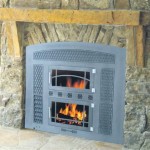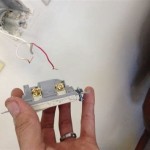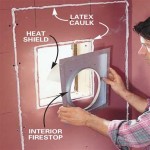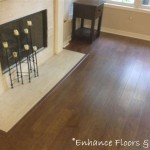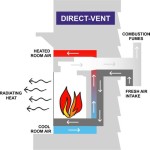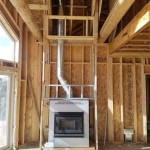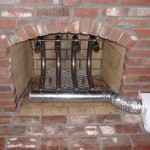How to Reface a Fireplace with Stone Veneer
Refacing a fireplace with stone veneer is a significant home improvement project that can dramatically enhance the aesthetic appeal of a living space. It involves applying a thin layer of manufactured or natural stone to the existing fireplace facade, effectively transforming its appearance without requiring structural modifications. This process can provide a more modern, rustic, or elegant look, depending on the chosen veneer style and colour. Successful execution of this project requires careful planning, precise measurements, and adherence to proper installation techniques.
Before commencing the refacing process, it is crucial to evaluate the existing fireplace structure to assess its suitability for stone veneer application. This includes inspecting the surface for any signs of damage, instability, or moisture intrusion. Addressing any pre-existing issues, such as cracks or crumbling mortar, is imperative to ensure a stable and long-lasting veneer installation. The existing surface must also be clean and free of any loose paint, debris, or coatings that could impede adhesion.
The selection of the appropriate stone veneer is a critical step. Both natural and manufactured stone veneers offer distinct advantages and disadvantages. Natural stone provides a unique, authentic look but can be more expensive and may require more specialized installation techniques due to variations in size and thickness. Manufactured stone veneer, composed of a concrete mixture moulded to resemble natural stone, offers a cost-effective alternative with consistent sizing and a wider range of style options. The choice of veneer will inevitably depend on budget, aesthetic preferences, and the overall design of the room.
Accurate measurement of the fireplace facade is crucial for determining the quantity of veneer needed. It is advisable to purchase a slightly larger amount than calculated to account for cuts, waste, and potential mistakes during installation. Additionally, gathering the necessary tools and materials is essential for a smooth and efficient refacing process. These typically include a mixing trough or bucket, a mortar mixer (optional for larger projects), a notched trowel, a rubber mallet, a level, a chisel, safety glasses, gloves, and the appropriate mortar specified for stone veneer application.
Preparing the Fireplace Surface for Stone Veneer
Proper surface preparation is paramount for ensuring adequate adhesion of the stone veneer. The first step involves thoroughly cleaning the existing fireplace facade. This can be achieved using a wire brush to remove loose particles, dirt, and debris. For painted surfaces, a chemical stripper or mechanical abrasion may be necessary to remove the paint layer. Grease or oil stains should be cleaned with a degreasing agent.
Once the surface is clean, it needs to be properly prepared to provide a suitable bonding surface for the mortar. For smooth surfaces, such as painted brick or tile, applying a scratch coat of mortar is highly recommended. This involves applying a thin layer of mortar to the surface and scoring it with the notched trowel to create grooves that will enhance adhesion. The scratch coat should be allowed to dry completely before proceeding with the veneer installation. Alternatively, a metal lath can be mechanically fastened to the surface to provide a more robust bonding surface. The lath should be attached securely with nails or screws, ensuring that it is flush against the existing facade.
If the existing fireplace surface is porous, such as unpainted brick, it is recommended to dampen the surface with water before applying the mortar. This will prevent the brick from absorbing moisture from the mortar too quickly, which can weaken the bond. However, the surface should not be saturated; it should only be slightly damp to the touch. The goal is to create an optimal environment for the mortar to cure properly and achieve a strong, lasting bond with the stone veneer.
Furthermore, consider the surrounding areas of the fireplace. Protect the floor and any adjacent walls with drop cloths or plastic sheeting to prevent mortar splatters and damage during the installation process. Adequate ventilation is also important, especially when working with mortar, which can release dust and fumes. Opening windows or using a fan can help to maintain air quality in the work area.
Applying the Stone Veneer with Mortar
The application of stone veneer involves carefully adhering the stones to the prepared fireplace surface using mortar. Begin by mixing the mortar according to the manufacturer's instructions. The consistency of the mortar is crucial; it should be thick enough to hold the stones in place but pliable enough to spread easily. A mortar mixer can be used for larger projects to ensure consistent mixing, but a trowel and mixing trough are sufficient for smaller installations.
Apply a layer of mortar to the back of each stone veneer piece, using the notched trowel to create ridges that will enhance the bond with the prepared surface. The thickness of the mortar layer should be sufficient to fill any gaps and ensure full contact with the surface. Avoid applying too much mortar, as this can squeeze out from the sides of the stones and create a messy appearance. Work in small sections, applying mortar to a few stones at a time to prevent the mortar from drying out before the stones are placed.
Press each stone firmly onto the prepared surface, ensuring that it is level and properly aligned with adjacent stones. Use a rubber mallet to gently tap the stone into place, ensuring good contact with the mortar. Maintain consistent spacing between the stones, using spacers or shims if necessary to achieve a uniform grout joint. The desired grout joint width will depend on the style of the stone veneer and the overall aesthetic you are trying to achieve.
Work from the bottom up, starting with the lowest row of stones and gradually building upward. This will prevent the weight of the upper rows from pushing down on the lower rows, potentially causing them to shift or become dislodged. As you work, periodically check the level of the stones to ensure that they are properly aligned and that the veneer is being installed straight. A level and a straight edge can be used for this purpose. Remove any excess mortar that squeezes out from the sides of the stones with a trowel or sponge.
Grouting and Finishing the Stone Veneer Installation
Once the stone veneer is installed and the mortar has had sufficient time to dry (typically 24 to 48 hours), the next step is to grout the joints between the stones. The choice of grout colour and texture is an important design consideration, as it can significantly impact the overall appearance of the finished fireplace. A contrasting grout colour can accentuate the stones, while a matching grout colour can create a more seamless look.
Mix the grout according to the manufacturer's instructions, ensuring that it is the correct consistency for application. Use a grout bag or a grout float to apply the grout to the joints between the stones. Fill the joints completely, ensuring that there are no voids or air pockets. Work in small sections, applying grout to a manageable area at a time.
After the grout has had a short time to set (typically 15 to 30 minutes), use a damp sponge to clean the excess grout from the surface of the stones. Be careful not to remove too much grout from the joints; the goal is to leave the joints filled but the surface of the stones clean. Rinse the sponge frequently and use clean water to avoid smearing the grout across the stones.
Once the grout has fully cured (typically 24 to 72 hours), inspect the installation for any cracks or imperfections. Touch up any areas as needed with additional grout. Finally, apply a sealant to the stone veneer and grout to protect it from moisture and staining. The type of sealant that is appropriate will depend on the type of stone veneer and grout used. Follow the manufacturer's instructions carefully when applying the sealant.
By carefully following these steps, a fireplace can be successfully refaced with stone veneer, transforming it into a beautiful and eye-catching focal point in the home. The result is an improved aesthetic appeal and an increase in the overall value of the property. The effort invested in planning, preparation, and execution will ensure a long-lasting and visually appealing fireplace.

Reface A Fireplace With The Look Of Stone Or Brick Barron Designs

Refacing Fireplace And Chimney Authority

Refacing Fireplace And Chimney Authority

Fireplace Refacing So You Want To Bob Vila

Faux Stone Panels For Fireplaces

Thin Stone Veneers Make A Fireplace Update Easy

Reface A Fireplace With The Look Of Stone Or Brick Barron Designs

Reface Fireplace Brick Makeover Home Stone Designs

Refacing Fireplace And Chimney Authority
Fireplace Refacing For South Milwaee Homeowner Badgerland Waesha Wisconsin

